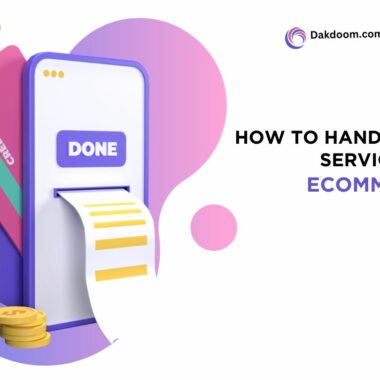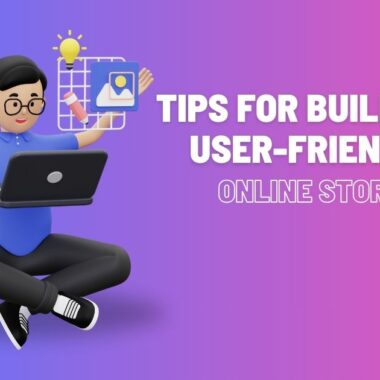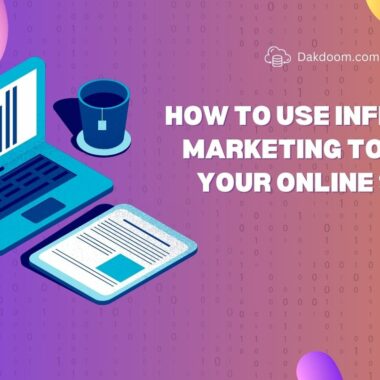How to Improve Your eCommerce Site’s User Interface (UI)
1. Understand Your Users
- User Research: Conduct surveys, interviews, and usability testing to understand your customers’ needs and behaviors.
- Analytics: Use tools like Google Analytics to track user behavior and identify pain points.
2. Simplify Navigation
- Clear Menu Structure: Design an intuitive and straightforward menu. Categories should be logically organized and easy to find.
- Search Functionality: Implement a powerful search feature with autocomplete and filters to help users find products quickly.
3. Enhance Visual Design
- Consistent Branding: Ensure that colors, fonts, and imagery align with your brand identity for a cohesive look.
- High-Quality Images: Use clear, high-resolution product images with zoom functionality to give users a detailed view.
4. Optimize for Mobile
- Responsive Design: Ensure your site is mobile-friendly by adapting the layout and content for various screen sizes.
- Touch-Friendly Elements: Make buttons and links large enough to be easily tapped on mobile devices.
5. Improve Page Speed
- Optimize Images: Compress images without losing quality to improve load times.
- Minimize HTTP Requests: Reduce the number of elements on a page to decrease loading times.

6. Streamline the Checkout Process
- Simplify Forms: Minimize the number of fields in forms and use auto-fill where possible.
- Guest Checkout: Offer a guest checkout option to avoid forcing users to create an account.
7. Implement Effective CTAs
- Clear Calls-to-Action: Use prominent and compelling CTAs like “Add to Cart” or “Buy Now” to guide users through their purchasing journey.
- Contrasting Colors: Ensure CTAs stand out with contrasting colors against the background.
8. Provide User Feedback
- Interactive Elements: Use animations or changes in button color to provide feedback when users interact with elements.
- Error Messages: Display clear and helpful error messages if users make mistakes during checkout or form submission.
9. Leverage Social Proof
- Customer Reviews: Display customer reviews and ratings prominently on product pages.
- Testimonials: Feature customer testimonials to build trust and credibility.
10. Enhance Accessibility
- Alt Text: Provide descriptive alt text for images to support screen readers.
- Keyboard Navigation: Ensure that all interactive elements can be navigated using a keyboard.
11. Test and Iterate
- A/B Testing: Regularly test different design elements and layouts to see what works best for your audience.
- Continuous Improvement: Gather feedback and make iterative improvements based on user behavior and preferences.
12. Integrate Helpful Tools
- Live Chat: Offer live chat support to assist users in real-time.
- Recommendation Engines: Use AI-driven product recommendations to enhance the shopping experience.
Creating an effective User Interface (UI) for your eCommerce site is crucial for providing a seamless shopping experience that keeps customers coming back. A well-designed UI not only enhances usability but also boosts conversion rates and customer satisfaction. Here’s an in-depth guide to help you elevate the UI of Dakdoom.com:
13. Conduct Comprehensive User Research
Understand Your Audience:
- Customer Personas: Develop detailed personas representing your typical customers. Include demographics, shopping behaviors, and pain points.
- User Surveys and Feedback: Gather direct feedback from your users through surveys and interviews. Ask about their preferences, challenges, and what they like or dislike about your current site.
Analyze User Behavior:
- Heatmaps: Use heatmap tools to track where users click, scroll, and hover on your site. This can highlight areas of interest and areas that may need improvement.
- Session Recordings: Implement session recording tools to watch real user interactions and identify usability issues.
14. Enhance Navigation
Design Intuitive Menus:
- Logical Categories: Organize products into clear, intuitive categories and subcategories. Avoid clutter by limiting the number of top-level categories.
- Breadcrumb Navigation: Implement breadcrumb trails to help users keep track of their location within the site and easily navigate back.
Optimize Search Functionality:
- Advanced Filters: Offer filters such as price range, brand, size, and color to help users narrow down their search results.
- Search Autocomplete: Implement autocomplete suggestions to guide users as they type and reduce search errors.
15. Refine Visual Design
Consistent Branding:
- Color Scheme: Choose a color palette that reflects your brand identity and is easy on the eyes. Ensure that colors are consistent across all pages.
- Typography: Use web-safe fonts that are easy to read and maintain consistency in font styles and sizes.
High-Quality Imagery:
- Product Photos: Use high-resolution images with multiple views, including zoom-in features. Consider 360-degree product views for a more interactive experience.
- Lifestyle Images: Include images that show the product in use to help customers visualize how it fits into their lives.
16. Ensure Mobile Optimization
Responsive Design:
- Adaptive Layouts: Design your site to automatically adjust to different screen sizes, including tablets and smartphones.
- Mobile-Friendly Navigation: Ensure that menus and buttons are easily tappable and that navigation remains intuitive on smaller screens.
Performance on Mobile:
- Fast Load Times: Optimize images and scripts to ensure quick loading times on mobile devices. Mobile users often have less patience for slow sites.
- Touch-Friendly Controls: Design touch-friendly buttons and controls that are easy to interact with on mobile devices.
17. Boost Page Speed
Optimize Assets:
- Image Compression: Use tools to compress images without sacrificing quality. Formats like WebP can provide high quality with smaller file sizes.
- Minify CSS and JavaScript: Remove unnecessary characters from code to reduce file sizes and improve loading times.
Leverage Caching:
- Browser Caching: Enable browser caching to store static resources like images and stylesheets locally on users’ devices, reducing load times on subsequent visits.
- Content Delivery Network (CDN): Use a CDN to distribute your content across multiple servers and deliver it from the server closest to the user.
18. Streamline the Checkout Process
Simplify Forms:
- Auto-Fill: Use auto-fill features to minimize manual data entry. For example, automatically populate address fields based on postal codes.
- Progressive Disclosure: Break the checkout process into steps and only show relevant fields at each stage to avoid overwhelming users.
Offer Multiple Payment Options:
- Diverse Payment Methods: Include various payment options such as credit/debit cards, digital wallets, and buy now, pay later services.
- Secure Transactions: Highlight security features like SSL certificates to reassure users that their payment information is protected.
19. Optimize Calls-to-Action (CTAs)
Design Effective CTAs:
- Prominent Placement: Position CTAs where users naturally look for them, such as near product descriptions and at the end of pages.
- Action-Oriented Text: Use clear and compelling language that encourages users to take action, like “Shop Now” or “Get Started.”
Visual Emphasis:
- Contrasting Colors: Use colors that stand out from the rest of the page to draw attention to CTAs.
- White Space: Utilize white space around CTAs to make them more noticeable and less cluttered.
20. Incorporate User Feedback
Interactive Elements:
- Micro-Interactions: Use subtle animations or visual cues to provide feedback on user actions, such as button clicks or form submissions.
- Confirmation Messages: Display confirmation messages or alerts after users complete actions, like adding items to the cart.
Error Handling:
- Clear Error Messages: Provide specific and actionable error messages if users encounter issues, such as incorrect form entries or failed transactions.
- Recovery Options: Offer users easy ways to correct errors and resume their tasks without frustration.
21. Leverage Social Proof
Display Reviews and Ratings:
- Product Reviews: Show customer reviews and ratings prominently on product pages. Include filters to sort by most helpful or recent reviews.
- User-Generated Content: Feature user-generated content such as photos and testimonials to build trust and authenticity.
Showcase Testimonials:
- Customer Stories: Highlight testimonials from satisfied customers to build credibility and encourage new users to make a purchase.
- Trust Badges: Display certifications and awards to reassure users of your site’s credibility and security.
22. Enhance Accessibility
Support for Assistive Technologies:
- Alt Text for Images: Provide descriptive alt text for all images to ensure that visually impaired users can understand content through screen readers.
- Keyboard Navigation: Ensure that all interactive elements, including forms and buttons, are accessible via keyboard navigation.
Design for Diverse Needs:
- Contrast Ratios: Maintain high contrast ratios between text and background to improve readability for users with visual impairments.
- Text Resizing: Ensure that text can be resized without losing content or functionality.
23. Test and Iterate
Conduct A/B Testing:
- Experiment with Variants: Test different versions of page elements, such as button colors, layouts, and CTAs, to determine which performs best.
- Analyze Results: Use analytics to measure the impact of changes on user behavior and conversion rates.
Continuous Improvement:
- Monitor User Behavior: Regularly review user data and feedback to identify areas for improvement.
- Stay Updated: Keep abreast of industry trends and best practices to ensure your UI remains current and effective.
24. Integrate Useful Tools
Implement Live Chat:
- Real-Time Support: Offer live chat functionality to provide immediate assistance and answer questions that users may have while shopping.
Utilize Recommendation Engines:
- Personalized Suggestions: Use AI-driven recommendation engines to suggest products based on user behavior and preferences, enhancing the shopping experience.
Conclusion
Improving the UI of Dakdoom.com involves a multifaceted approach that encompasses understanding user needs, optimizing design and functionality, and continuously testing and refining. By focusing on these areas, you can create a more engaging, efficient, and enjoyable shopping experience that not only meets but exceeds user expectations.
Feel free to tailor these strategies to align with your specific goals and user needs to drive the best results for Dakdoom.com.











